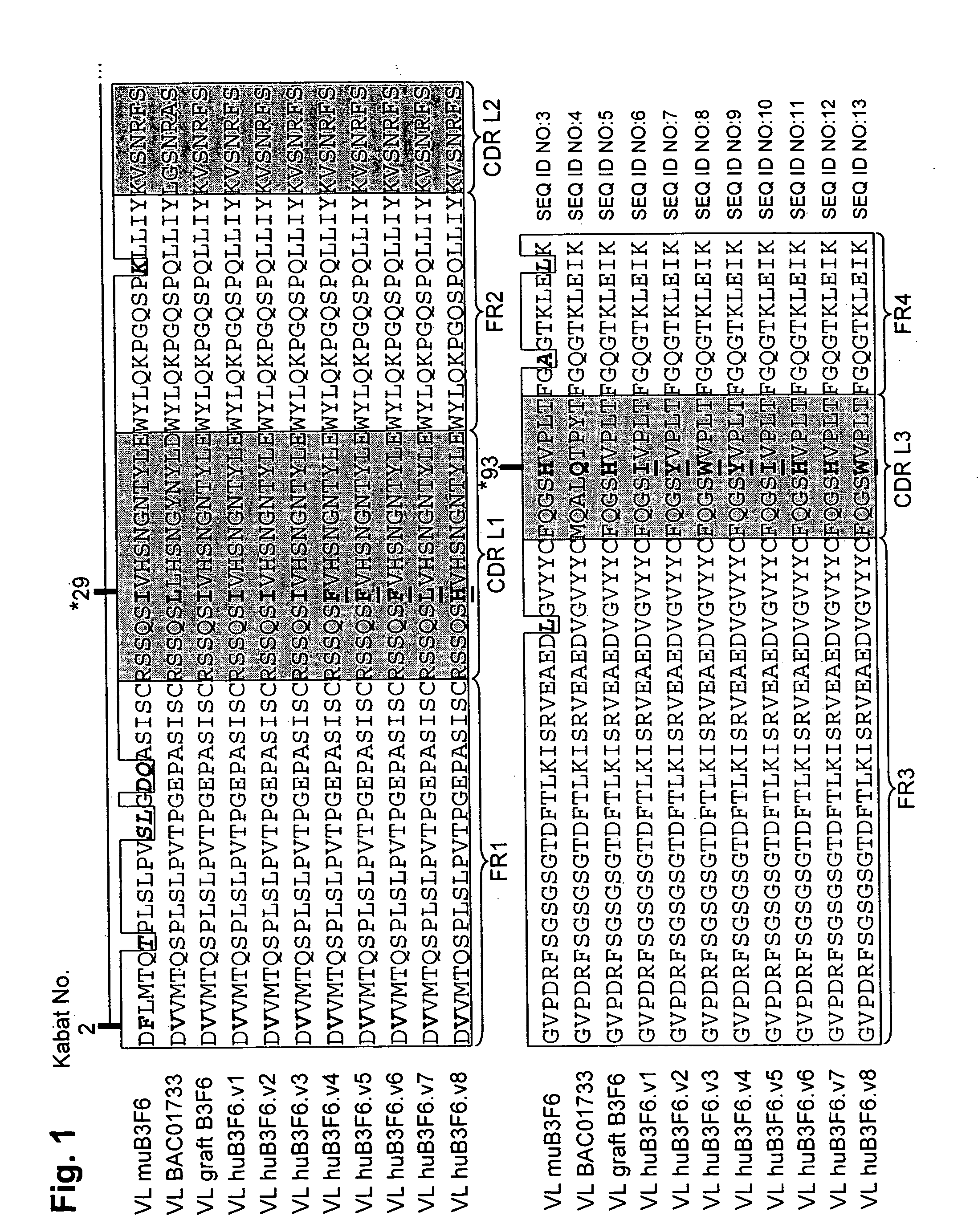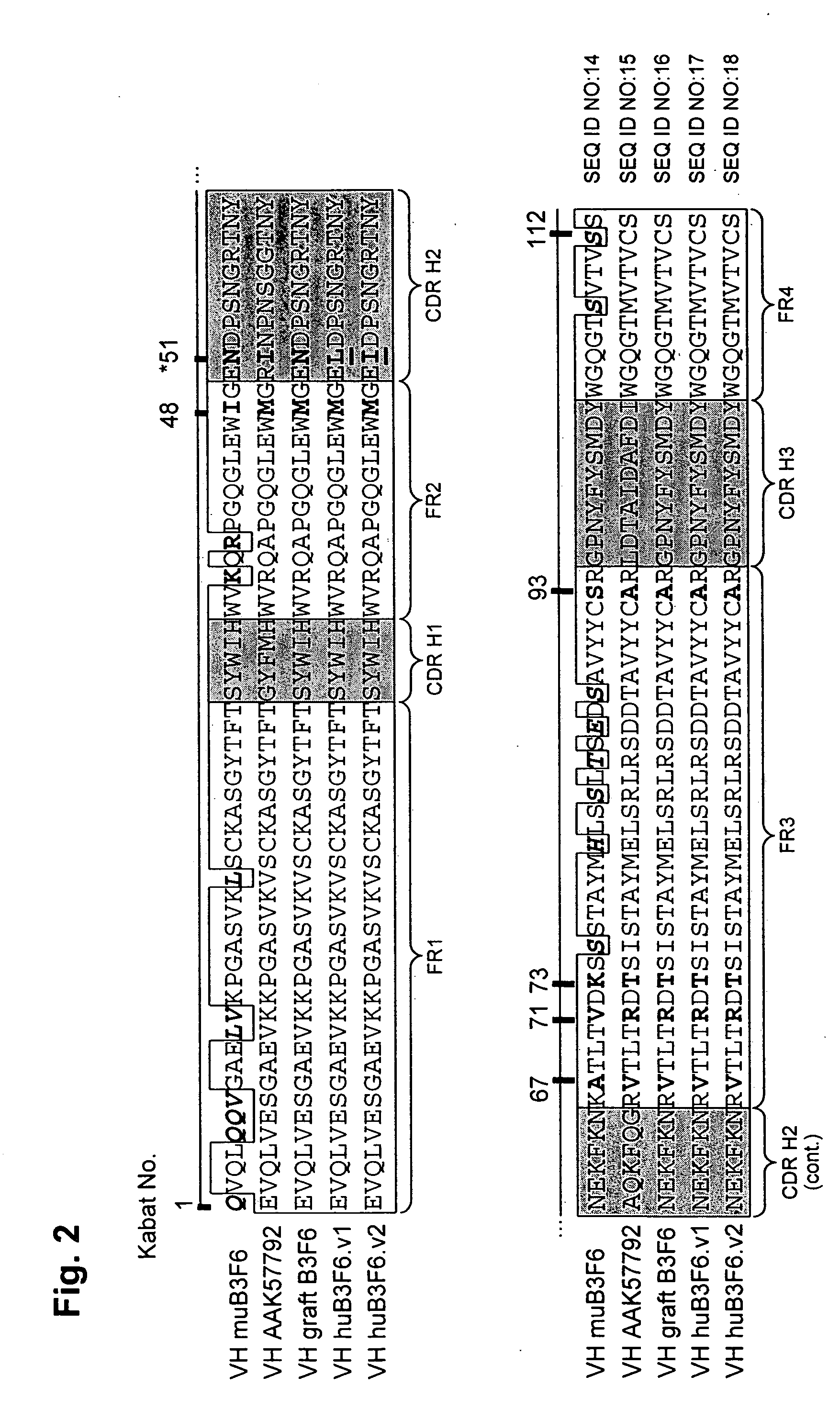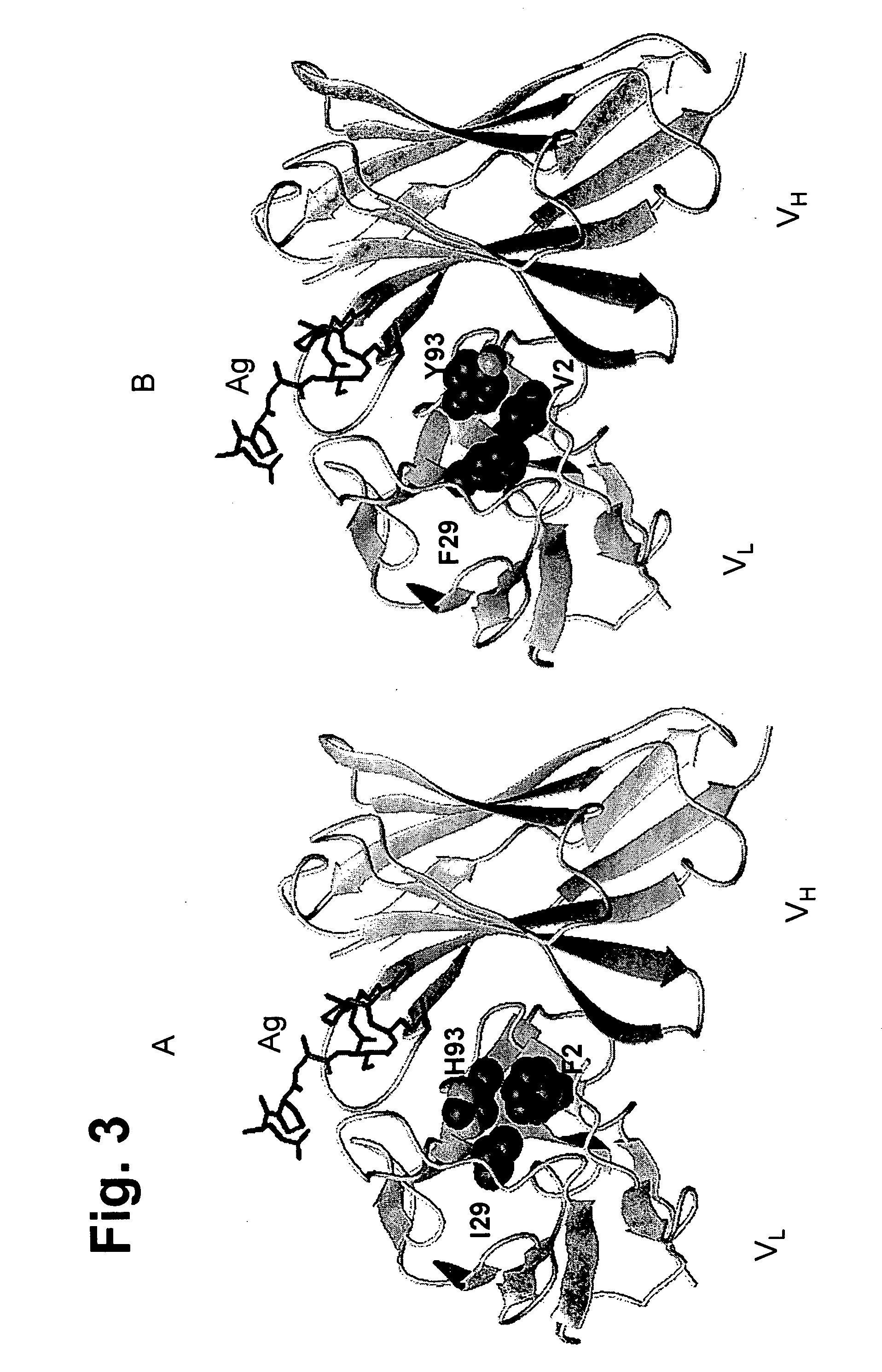Methods of humanizing immunoglobulin variable regions through rational modification of complementarity determining residues
a technology of complementarity and modification, applied in the field of humanizing immunoglobulin variable regions through rational modification of complementarity determining residues, can solve the problems of restricted use of such antibodies and increased immunogenicity of molecules, and achieve the effect of reducing immunogenicity
- Summary
- Abstract
- Description
- Claims
- Application Information
AI Technical Summary
Benefits of technology
Problems solved by technology
Method used
Image
Examples
example 1
Humanization of the B3F6 Antibody
[0300] For humanization of the B3F6 VL chain, the framework sequence gi-21669417 (BAC01733) was selected as the acceptor.
[0301] Sequence analysis revealed that FR residue 2 differs between the donor and acceptor (F in donor V in acceptor). The residue was identified as being important because it interacts with H93 (in CDR-L3), involved in binding peptide antigen.
[0302] The light chain environment around the F at position 2 was examined in the donor antibody. In one embodiment, the I at position 29 in donor DRL1 was changed to F. In another embodiment, the H at position 93 was left as H or changed to I or Y. In another embodiment, the H at position 93 was changed to W. In another embodiment, the H at position 93 was changed to I or Y.
[0303] An alignment of the light chain of donor murine B3F6, the acceptor, and the various humanized designs is shown in FIG. 1. The differences in FR amino acid residues and the positions of the changes made in the h...
example 2
Humanization of the HP1 / 2 Antibody
[0307] For humanization of the murine HP1 / 2 VH domain (SEQ ID NO: 19), the human germline framework IGHV-1f (SEQ ID NO:20) was selected as acceptor. The murine HP1 / 2 antibody has an unusual canonical residue D94 (Kabat numbering) which interacts with residues F27, T32, and M34 of CDR-H 1, M96 of CDR-H3 and A24 of FR1 as judged from the computational analysis of x-ray structure of murine HP1 / 2 Fab fragment.
[0308] Sequence alignment analysis (see FIG. 4) indicated that human acceptor framework IGHV-1f has a threonine at position 94 in place of a murine aspartate residue. VH CDR graft (SEQ ID NO:21) was predicted to have different CDR-H1 and CDR-H3 conformations as compared to murine HP1 / 2 CDR-H1 and CDR-H3. The computational analysis of potential substitutions at CDR positions 27, 32, 34, and 96 and at position 24 in the framework revealed solution structures that maintained the conformations of CDR-H1 and CDR-H3 to allow for threonine in position 9...
example 3
α4β1 / mAb HP1 / 2Fab ELISA Binding Assay
[0314] HP1 / 2 Fab fragments of different VH humanization variants of Example 2 paired with VL CDR graft were expressed and their binding affinity for purified α4β1 VLA4 integrin were compared in an ELISA binding assay with a chimeric Fab that has murine VH and VL domains.
[0315] In this assay, 1 ug / ml of purified VLA4 (in 50 mM NaHCO3 buffer (pH 9.2) containing 10 ug / ml BSA) was coated on a 96-well (100 ul / well) Corning Easy-wash plate and incubated overnight at 4° C. Following incubation, the plate was blocked with 150 ul / well of blocking buffer(50 mM Tris-HCl pH 7.5, 150 mM NaCl and 2% Dry Milk) for 60 minutes at room temperature. The plated was then washed four times with TBS Washing buffer (50 mM Tris-HCl pH 7.5, 150 mM NaCl, 0.05% Tween-20). Dilutions of each HP1 / 2 Fab to be tested were prepared in binding buffer (TBS buffer containing 2% Dry Milk) and 100 ul of each dilution was added to the designated wells (100 ul of TBS assay buffer was ...
PUM
| Property | Measurement | Unit |
|---|---|---|
| Current | aaaaa | aaaaa |
| Time | aaaaa | aaaaa |
| Composition | aaaaa | aaaaa |
Abstract
Description
Claims
Application Information
 Login to View More
Login to View More - R&D
- Intellectual Property
- Life Sciences
- Materials
- Tech Scout
- Unparalleled Data Quality
- Higher Quality Content
- 60% Fewer Hallucinations
Browse by: Latest US Patents, China's latest patents, Technical Efficacy Thesaurus, Application Domain, Technology Topic, Popular Technical Reports.
© 2025 PatSnap. All rights reserved.Legal|Privacy policy|Modern Slavery Act Transparency Statement|Sitemap|About US| Contact US: help@patsnap.com



